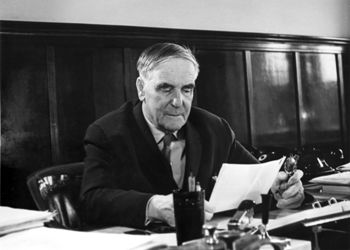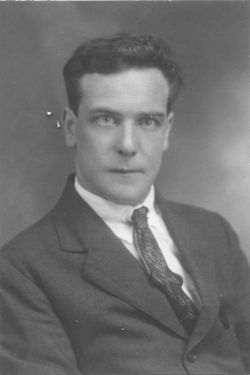Piotr Leonidovich Kapitza Пётр Леони́дович Капи́ца
1895-1984. Physicist; Nobel laureate. 
Kapitza was born in Kronstadt in the Russian Empire, the son of a military engineer. His studies were interrupted by theFirst World War, in which he served as an ambulance driver for two years on the Polish front. He graduated from the Petrograd Polytechnical Institute and subsequently studied in Britain, working for over ten years with Ernest Rutherford in the Cavendish Laboratory. He was made a Fellow of the Royal Society in 1929 and was the first director (1930-34) of the Mond Laboratory in Cambridge. In the 1920s he originated techniques for creating ultrastrong magnetic fields by injecting high current for brief periods into specially constructed air-core electromagnets. In 1928 he discovered the linear dependence of resistivity on magnetic field for various metals in very strong magnetic fields.
In the 1930s he started doing low-temperature research, beginning with a critical analysis of the existing methods for obtaining low temperatures. In 1934 he developed new and original apparatus (based on the adiabatic principle) for making significant quantities of liquid helium.
Kapitza formed the Institute for Physical Problems, in part using equipment which the Soviet government bought from the Mond Laboratory in Cambridge (with the assistance of Rutherford, once it was clear that Kapitza would not be permitted to return).
In Russia, Kapitza began a series of experiments to study liquid helium, leading to the discovery in 1937 of its superfluidity. He reported the properties of this new state of matter in a series of papers, for which he was later awarded the 1978 Nobel Prize in Physics "for basic inventions and discoveries in the area of low-temperature physics". (He shared the prize with Arno Allan Penzias and Robert Woodrow Wilson, whose work was unrelated to Kapitza's). In 1939 he developed a new method for liquefaction of air with a low-pressure cycle using a special high-efficiency expansion turbine. Consequently, during World War II he was assigned to head the Department of Oxygen Industry attached to the USSR Council of Ministers, where he developed his low-pressure expansion techniques for industrial purposes. He invented high-power microwave generators (1950-1955) and discovered a new kind of continuous high pressure plasma discharge with electron temperatures over 1,000,000K.
In November 1945 Kapitza quarrelled with Lavrentiy Beria, head of the NKVD (People's Commissariat for Internal Affairs), and wrote to Stalin about Beria's ignorance of physics and his arrogance. Amazingly, Stalin backed Kapitza, telling Beria he had to get on with the scientists. Kapitza refused to meet Beria: "If you want to speak to me, then come to the Institute." Kapitza refused to work with Beria even when Beria gave him a hunting rifle. Stalin offered to meet Kapitsa, but this never happened.
Immediately after the war, a group of prominent Soviet scientists (including Kapitza in particular) lobbied the government to create a new technical university, the Moscow Institute of Physics and Technology. Kapitza taught there for many years. From 1957, he was also a member of the praesidium of the Soviet Academy of Sciences and at his death in 1984 was the only praesidium member who was not also a member of the Communist Party.
Kapitza resistance is the thermal resistance (which causes a temperature discontinuity) at the interface between liquid helium and a solid. A minor planet, 3437 Kapitsa, discovered by Soviet astronomer Lyudmila Georgievna Karachkina in 1982, is named after him.
| Memorial inscription | Translation |
|
PIOTR LEONIDOVICH KAPITZA E RVSSIA ADVENA PER ANNOS X SOCIVS |
Piotr Leonidovich Kapitza came here from Russia and was a Fellow for ten years. By employing new theories and new apparatus he re-examined from first principles many problems in physics. Later he was forced to remain in Russia, and he was held to be the most remarkable of the Russian physicists. He was a whimsical and generous man who never forgot the College. In his old age he was made an Honorary Fellow. He died on 8th April 1984 at the age of eighty-nine. |
Piotr Leonidovich KapitzaBrass located on the north wall of the Ante-Chapel. |
Click on the thumbnail for a larger image. |
|
|
PREVIOUS BRASS |
|
NEXT BRASS Alan Ker |
| Brasses A-B | Brasses C-G | Brasses H-K | Brasses L-P | Brasses R-S | Brasses T-W |

